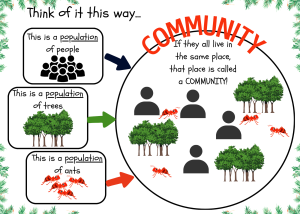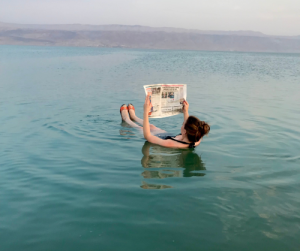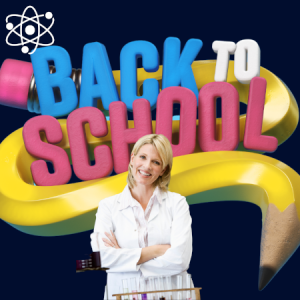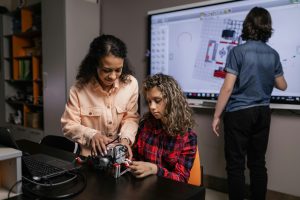How can differentiated instructional strategies help my students? Well. Here’s my story.
Every student is unique, with different learning styles, interests, and strengths. But, are you treating them all the same, expecting them to learn at the same pace and in the same way? This one-size-fits-all approach can leave many students feeling frustrated, bored, or left behind.
Is there a better way? Enter differentiated instructional strategies. This teaching approach recognizes and responds to the diverse needs of students. By tailoring instruction to meet each student’s individual needs, interests, and abilities, you unlock their potential in ways that traditional teaching methods can’t match.
In this article, we’ll look at an example from one teacher’s (my own) experience.
Whether you’re a teacher looking to improve your practice or a parent interested in supporting your child’s learning, read on to discover the power of differentiated instruction.
My Story begins
It was years back when I made the change. I changed the way I taught by incorporating the concept of learning styles and differentiation into my classroom. Without really knowing it, I was adding differentiated instructional strategies into my curriculum.
I had grown tired of the same-ole, same-ole.
In the years before that, I taught like I had been taught. There was a lot of notetaking, explanations, some discussions, a few exercises, and, if it worked out, a lab. (I did see the value of labs.) That was the essence of my science teaching instruction.
Come to think of it, I was never really taught how to teach. It’s true. Sure, there were mentors, and I student-taught under a veteran science teacher. Yet, none of it was quite like I had hoped. So, I learned as I went.
Nowadays, most schools of education are quite phenomenal. I discovered this by having student and practicum teachers of my own. The ones I had always amazed me!
Flashback
I entered into education thinking that there would be this Socratic exchange of ideas. You have to realize that before heading off to school for a degree in education, I had earned a degree in science, biology to be precise.
My first real science job was working at a production laboratory. We made a variety of materials for microbiological culturing and raised specific pathogens. These pathogens were used to create testing solutions and media for the identification of said organisms.
I started at the bottom in this laboratory taking care of lab animals. When the opportunity arose, I made the jump to real science work – creating an antigen. The laboratory was a production lab. My new job was creating products using large batches of chemicals extracted from animal sources.
As time passed, this too left me wondering if there was more. Unsatisfied, I began another search. The idea of teaching came across as the right path. It was thrilling to envision myself helping students learn. Enter – the educational field and graduate school.
End flashback
History of change
For years, I worked at teaching not trying too many approaches. I did learn that labs/ hands-on activities were the right kinds of activity. Thank goodness for that.
Anyway, around 2007 or so, I got tired of the same old method of teaching. I wanted something new, something different, something that made a difference. My state testing scores were okay… not great, but, not bad.
“There has to be a different way of approaching science,” I grumbled, perplexed and dissatisfied with the usual.
That was when I discovered brain-based learning and a method called layered curriculum.
“This is what I’m looking for,” I celebrated.
This approach merged student differentiation, Bloom’s taxonomy, and a few other educational concepts into a self-engineered curriculum.
With a guidebook and an entire summer ahead of me, I began developing lessons. The next year, without telling anyone what I was going to do, I implemented the curriculum with modifications for my students and the school system. I figured, “I’m a scientist and I’ll treat this like an experiment.”
At first, it was a stretch. Students were not used to being given the opportunity and time to work on a choice of projects, or assignments … alone or in small groups. Rarely were they allowed to express their understanding of science concepts or present them in ways that best fit their learning style.
Break in the clouds
Yes, it took time. But after two years had passed, I saw the difference in their understanding with an increase in their EOY state testing scores.
I was thrilled and didn’t even realize I was using differentiated instructional strategies.
Not all is a silver lining
The downside of this new approach was an increase in the number and variety of items to be graded. For instance, I might have a student-made video to watch/critique, a piece of art to examine, questions from an assigned video, and a lab activity to grade. As you can imagine, it took time.
It was an ongoing process with each day presenting something new to assess.
I wasn’t one to take assignments home to grade. So, I stayed most nights (even Fridays) until 5:30 and later making sure the work was graded, and comments written. That way they were ready to be returned the next school day. Yet, despite all the work, I found it rewarding.
Another piece to the puzzle
Eventually, I added a learning styles discussion and assessment to my first days of school repertoire. I used it to give students an idea of the way they processed the information best. The “choices” they were given for lessons were based on the three main learning styles. What the student had to do was to choose something they felt comfortable, or excited, to complete.
Though I prodded and prodded students to choose tasks that suited their learning style, it didn’t always work. We’re talking about middle school students here. Many would ask their friends, “Which one are you going to do?” And, naturally, they would do the same. Since they had the freedom of choice, some had to learn the lesson the hard way. Others, sadly, never learned their lesson. Oh, well. That’s life.
Eureka
I remember one day in particular. This young lady sat in the front on the left. I was handing back their graded choices and she couldn’t understand why she kept making low scores on them. I asked her, “What is your learning style?” She couldn’t remember. In her file, where they kept their graded choices, we found the test results. She was a visual learner. But, she always chose to do bookwork. I suggested she try to do artistic forms of expression. She grudgingly agreed.
From that time on, her choice grades improved quite a bit. But, more importantly, her testing scores improved. I was so proud of her!
I used her example in the following years. It was the perfect way to illustrate the intent behind the choices and to coax students to express themselves through their giftings.
Though this young lady wasn’t the only floundering student, I had a few other opportunities. I managed to convince others to choose the method that was right for them. But, this young lady stands out as a shining example in my mind.
Summing up
The point of this story is that if you provide a variety of opportunities for students to demonstrate their comprehension of science concepts, you will increase their ability to learn, comprehend, and excel. Plus, you have incorporated differentiated instructional strategies into your curriculum.
So, if you have yet to venture into the world of differentiated learning or learning styles, you owe it to your students to give it a shot. You don’t have to dive full in. Add a lesson here or an assignment there to get the feel of things. Your students will surprise you.







